Outdoor unit
ZUBADAN PUZ-SHWM
- Heat exchanger
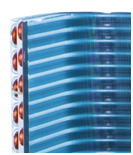
The Zubadan Inverter heat exchanger is constructed of two or three rows of copper tubes with aluminum fins, depending on the power of the unit. The exchanger is coated with an anti-corrosion coating which is particularly effective in areas with high levels of air pollution. Harmful substances in the air can damage the aluminum radiator lamelas, reducing the efficiency and life of the appliance.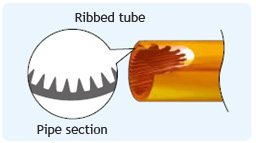 The exchangers use improved corrugated copper tubes to increase the heat transfer surface. More heat transfer means more efficiency.
The exchangers use improved corrugated copper tubes to increase the heat transfer surface. More heat transfer means more efficiency. - Inverter board
Control board integrated into the outdoor unit. It is cooled by a heat sink, using outside cold air. In general, the primary function of the inverter board is to control the heat pump unit. However, it has some additional interesting functions worth mentioning: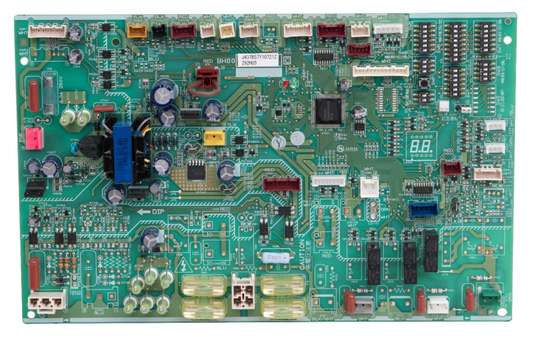
Heater connector - PAC-SE60/61RA set
An optional warming tray heater or heating cable can be connected to the outdoor unit. This set can be used to activate the heating exhaust to avoid freezing of condensation after the defrost process. The defrost signal is active for 15 minutes after the defrosting process begins.
DIP switch
The outdoor unit has a number of settings defined by the DIP switches on the board, like the indoor unit's FTC board. Here are a few:
• Automatic restart after power failure - After power restoration, heat pump continues to operate in the same mode as before the failure.
• Outdoor temperature limit for refrigerant vapor injection operation - With two DIP switches it is possible to define from which outdoor temperature Flash Injection starts:
• ≤-6oC (factory setting)
• ≤-3oC
• ≤0oC
• ≤3oC
• Defrost setting for regions with increased humidity - Ability to increase the frequency of defrosts for a region with increased humidity.
• Pump down function - When moving or disposing of the unit, refigerant has to be pumped down from the system according to the pump down procedure.
• Indoor unit separate power supply - Used when the indoor unit is powered separately.
• Manual defrost - Forcing the defrost in outdoor unit.
Electronics cooling
Innovative path of air flow through the electronics. The air movement is due to the underpressure created by the unit fan. The system is equipped with a trap to prevent water from entering the system.
Radiator: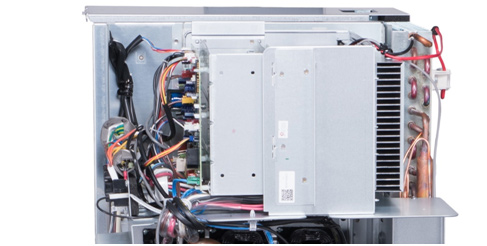
Electronics:

- Reactor
A reactor is used to limit the operating current of DC and AC drives. Its main function is to protect the compressor and system from uncontrolled voltage spikes. It is one of the components for maximum trouble-free operation.
In the PUZ-SHWM and PUD-SHWM series, the location of the element depends on the type of unit. In 3-phase devices, the reactor is placed above the compressor (photo No. 1), while in 1-phase units, the reactor is located directly on the inverter board (photo No. 2).
Photo No. 1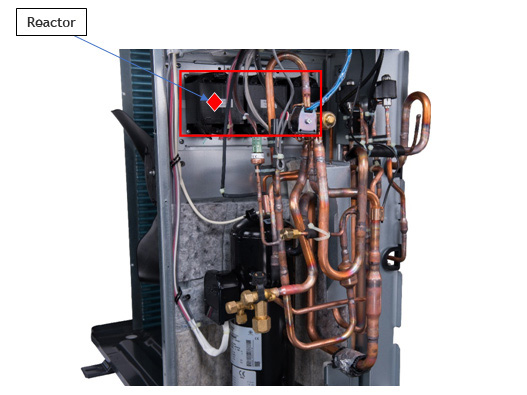
Photo No. 2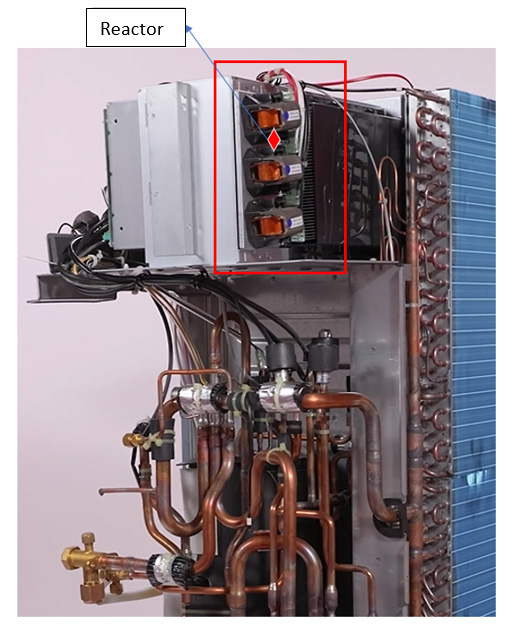
- Fan
The Zubadan Inverter heat pumps are equipped with a fan driven by a DC motor. By adjusting the position (distance from the heat exchanger and bezel), increasing fan diameter and optimizing blade shape, the air flow noise is reduced. Combinig it with the the right shape of the diffuser, outdoor unit operation noise is reduced.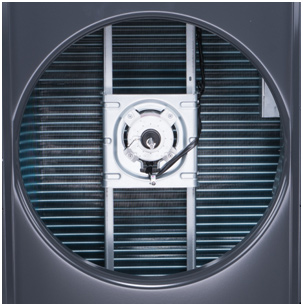
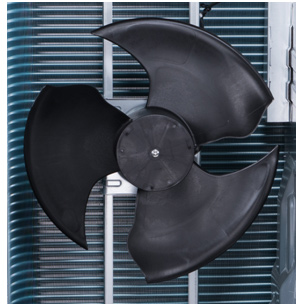
Compared to conventional models, the PWL rate is reduced by 10dB(a).
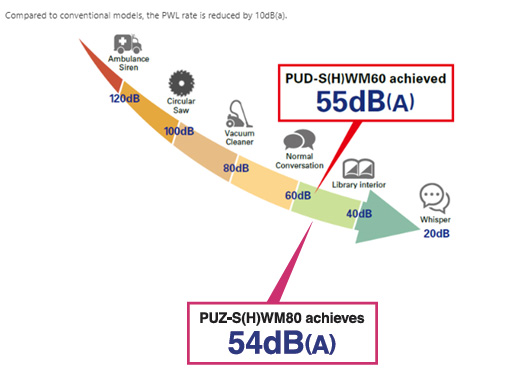
- Refrigeration system – Zubadan R32 (PUZ-SHWM)
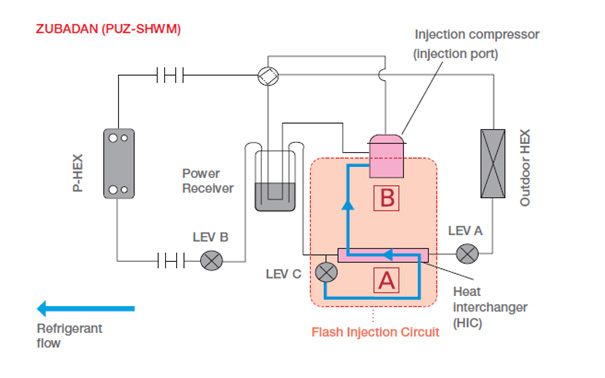
Refrigeration system – Zubadan R32 (PUD-SHWM)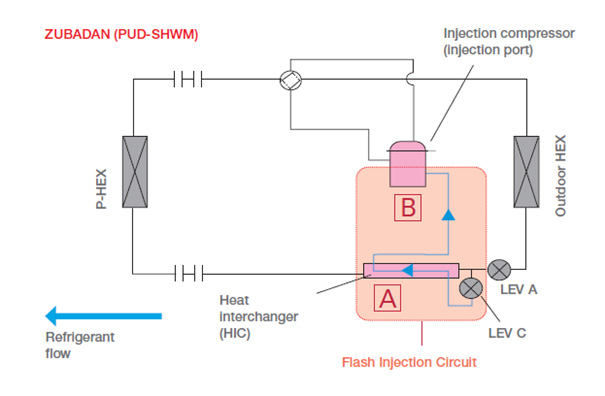
Refrigeration system – Zubadan 23kW R410a
The patented Zubadan Inverter technology is currently the optimal solution for air-to-water heat pumps. The Zubadan refrigerant circuit with heat interchanger HIC and Flash Injection compressor enables the refrigerant flow rate to be stabilized even at low outside temperatures. As a result, the system is able to operate at full capacity even at -15oC. Even at -30oC, the heat pump is capable of efficient and reliable operation. This means that, thanks to Zubadan technology, it becomes unnecessary to oversize the system to have a safety margin during heating operation.
Heat interchanger (HIC)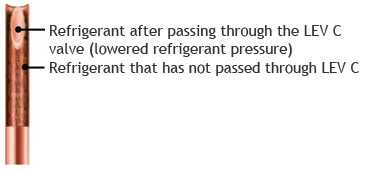
Objective: Partial or complete evaporation of the refrigerant.
The result: Increasing the energy efficiency of the system.
When liquid refrigerant is compressed, the compressor is subjected to high loads and the result is lower operating efficiency. An additional exchanger, HIC aftercooling, supports heat transfer at two different pressure levels. The heat exchange process on the exchanger converts the liquid injected agent into a mixture of liquid and gas, thus increasing the overall efficiency of the system.
Refrigerant injection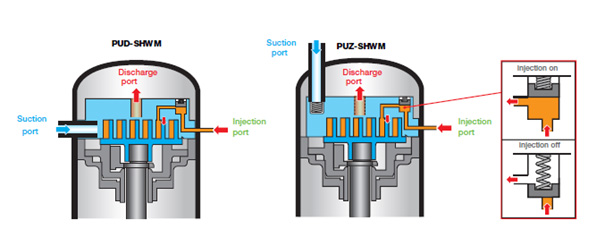
Objective: Refrigerant volume increase.
The result: Increased heating power at low ambient temperatures, higher supply temperature and an accelerated defrosting process.
The refrigerant flows through the HIC aftercooling system to the compressor through the injection port. The injected refrigerant can be used to increase the volume in the circuit when the outside temperature is low and at the start of the units operation.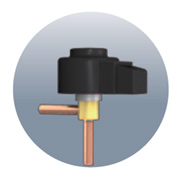 LEV electronic expansion valve
LEV electronic expansion valve
Expansion valves play an important role in the refrigerant circuit - they determine the ability to adjust the flow rate of refrigerant in the entire system and affect the comfort of the internal environment. Therefore, it is very important to adjust the pressure relief valves precisely. The opening/closing process of the LEV expansion valve is controlled by pulsing signals. Mitsubishi Electric uses electronic expansion valves that can be adjusted up to 500 pulses for optimum operation.
Power Receiver – only for PUZ-SHWM and PUHZ-SHW 23 kW
The refrigerant is overcooled by a special Power Receiver which, in combination with two separately controlled expansion valves, achieves optimal heating power in highly energy efficient operation. This technology is ideally suited to the R410a and R32 characteristics and improve capacity.
The implementation of the Power Receiver in refrigerant circuit of PUZ-SHWM series is one of the implemented modifications compared with PUD-SHWM series. Receiver, besides improving capacity, enables the devices to operate in cooling mode.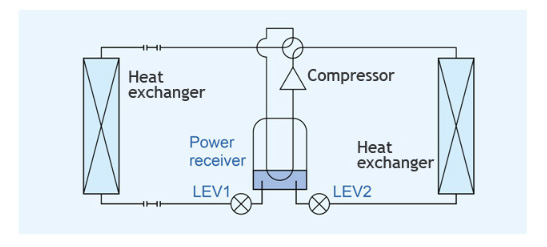
Flow temperature
The new outdoor units of the Zubadan Inverter PUZ-SHWM series feature high flow temperatures at very low ambient temperatures without electric heaters. Achieving a flow temperature of 50 ˚C is possible even at an ambient temperature of -30 ˚C. Connecting the units with the new Generation E indoor units makes it possible to achieve even higher temperatures, even up to 70 ˚C.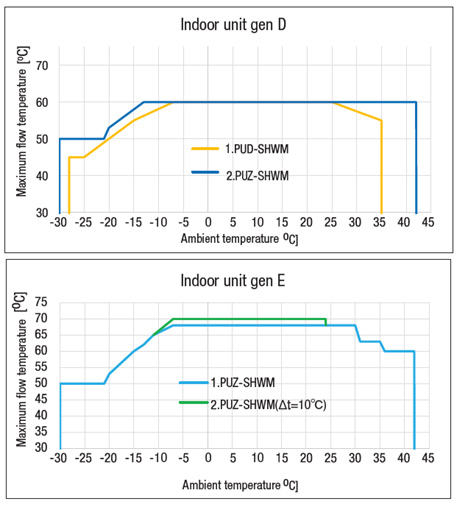
Four-way reverse valve
The four-way reverse valve is used to change the direction of the refrigerant flow. The Zubadan R32 heat pumps are used to provide an effective defrosting method. With 23kW of the R410a factor unit, the valve is also used to switch heat/cooling modes.
Heating operation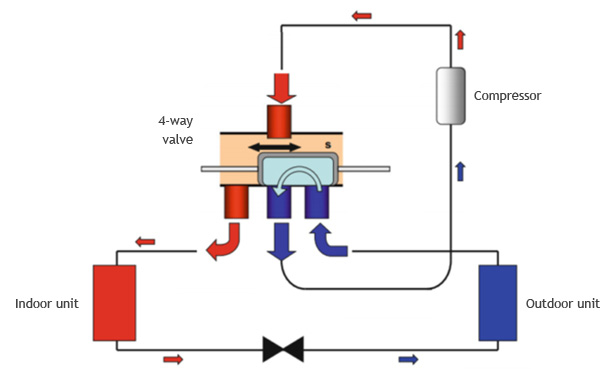
Cooling operation/Defrost
Reversible operation
One of the most significant changes introduced in the Zubadan PUZ series compared to the Zubadan PUD is the reverse operation mode. The operating range in cooling mode is from 10 to 52 C. This function was introduced with a small refrigerant charge of max 2.4 kg and a maximum refrigeration piping length of 30 m. - Compressor
The Zubadan heat pump series is a choice of seven models (6,8,10,12,14 kW) in the PUD-SHWM series and seven models (6,8,10,12,14 kW) in the PUZ-SHWM series using R32 refrigerant and one R410a unit with 23 kW capacity. The guaranteed operating range up to -28oC in PUD-SHWM series and the nominal heating capacity up to -15oC are just a part of many advantages of this model range. In PUZ-SHWM series the operating has been expanded to an impressive -30oC. Zubadan Inverter series units are equipped with scroll compressors with refrigerant vapor injection.
Mitsubishi Electric started production of compressors in 2002. Since then, it has been the leading manufacturer of scroll compressors. To save energy and ensure the reliability of the compressor, the advanced Frame Compliance Mechanism has been developed. This technology ensures that Mitsubishi Electric’s scroll compressors have the highest capacity on the market.
Principle of operation
In scroll-type compressors, compression is achieved by the interaction of two Archimedean spirals. One of them is stationary, while the other moves an eccentric movement. Turning the spiral will draw in the refrigerant. As a result of further movement, the area between the coils is reduced, which results in the gas being compressed. These compressors are mainly used beacause of its high efficiency and low noise and vibration levels at the same time.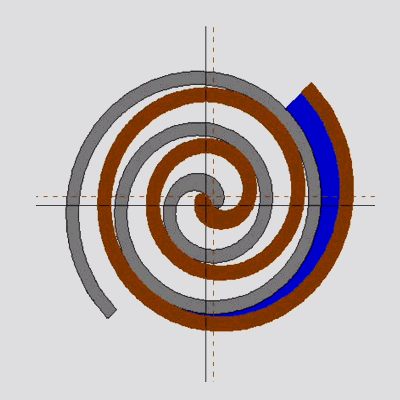
Frame Compliance Mechanism
The scroll compressor has a mechanism called FCM (Frame Compliance Mechanism), which has been patented by Mitsubishi Electric. This mechanism allows axial (vertical) movement of the rotating spiral's support frame. The frame movement is automatically adjusted by the pressure in the two pressure chambers. The frame, together with the spiral, is moved upward by the pressure in the first chamber and the pressure in the second chamber automatically matches the optimum contact pressure. This solution significantly reduces leakage and friction losses and ensures very high efficiency over the entire speed range. The optimum pressure between the coils reduces noise and vibration levels. This results in quieter operation of the FCM compressor.
FCM can minimize gas leakage in the spiral compression chamber, maintain cooling capacity and reduce power loss through self-regulation of the orbiting spiral to the pressure load and accuracy of the fixed spiral profile. The FCM compressor has not only a movable orbiting spiral, but also a movable supporting frame. This technology is only used on Mitsubishi Electric compressors.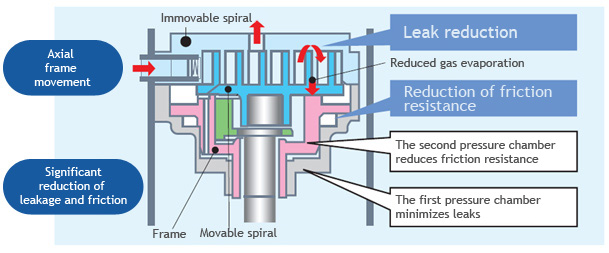
Refrigerant vapor injection
What makes these units different from the competition? In traditional heat pumps, when the ambient temperature is low, the volume of refrigerant in the compressor decreases. This is related to a decrease in refrigeration pressure and protection against overheating (caused by high compression work). This has a major impact on the heating capacity of the system, consequently causing it to drop. Zubadan refrigerant injection ensures that the volume and load of the compressor is maintained at an optimal level (by cooling it down), thus maintaining the heating capacity of the unit.
In the new product line, there have been modifications in the refrigerant vapor injection. The suction port has been placed on the top of the compressor and the check valve has been installed in the refrigerant circuit. These changes prevent the backflow of the refrigerant significantly reducing the reliability of the system. As a result, it enables the device to achieve a flow temperature of up to 70oC and extends the operational range to -30oC.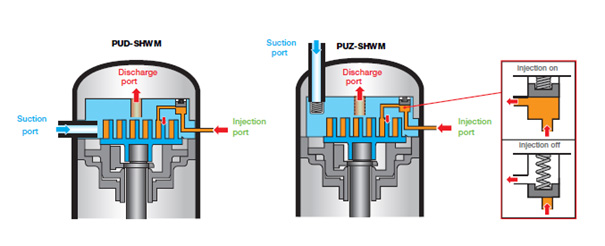
Inverter technology
The inverters electronically control the voltage, current and frequency of electrical devices such as compressor motors in heat pump. They receive information from sensors that monitor operating conditions and regulate the speed of the compressor, which directly regulates the power of heat pump. Optimum frequency control reduces excessive electricity consumption and ensures the most comfortable room environment. Mitsubishi Electric inverters ensure maximum performance and optimum frequency control. The result is optimum power supply for all heating/cooling ranges which leads to maximum comfort (with minimum energy consumption). Quick performance, comfort and low operating costs are the commitments of Mitsubishi Electric.
Economical operation
Low operating costs are a key benefit of inverter devices. Combined advanced inverter technologies with state-of-the-art electronic and mechanical technologies, create synergies that improve heating efficiency. The result is better performance and lower power consumption.
Compressors without frequency converter are started and shut down several times to maintain the set temperature. This repetitive on/off operation consumes excessive amounts of electrical power and affects the service life of unit. Compressors equipped with a frequency converter run continuously - the frequency converter quickly optimizes the operating frequency according to temperature variations. This ensures energy-efficient operation and a more comfortable indoor temperature.
Sinusoidal control with magnetic flux
This drive is actually a microprocessor that converts the current waveform of the compressor motor from a standard-shaped signal to a sinusoidal-shaped (180° forward angle) for greater efficiency by increasing the motor scroll utilization rate and reducing energy losses.
Economical vector inverter
This inverter monitors the variation in compressor motor speed and generates the most efficient waveforms for engine speed. As a result, productivity at all speeds has been increased, less power is used and annual energy costs are reduced.
Constant waveform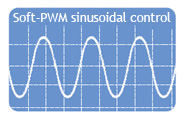
A compact inverter unit with an electronic chip embedded in the resin is used. For quiet operation, the 'soft-PWM' function is used to suppress characteristic metallic sounds of a conventional inverter.
PAM (Pulse amplitude modulation)
THE PAM is a method of controlling the current, by adapting its path to the voltage. This allows energy to be used more efficiently, with fewer losses. The PAM control allows 98% efficient use of the energy consumed.
The PAM regulates the shape of the current waveform by bringing it closer to the voltage waveform. Extremes are reduced and 98% of the energy is used.
- Drain pan
A new drain pan has been designed for the Zubadan devices. The special shape of the drain pan base and its slope significantly speeds up and optimizes the condensate drain process. Better condensation drainage also reduces the risk of freezing.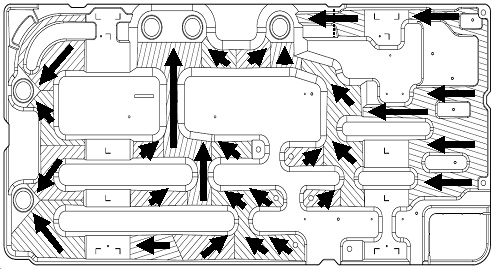

- Temperature sensor
The outdoor air temperature sensor is a resistance sensor integrated into the outdoor unit. It is placed in a plastic chasis to minimize the effect of radiation on the sensor measurement.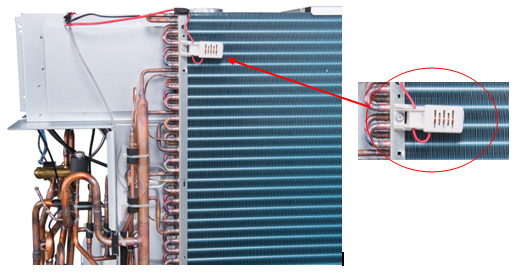
- Shipping protection
The Zubadan PUZ-SHWM series does not require the disassembly of shipping protection. - Stabilizing board
One of the design changes introduced to the PUZ-SHWM series units is a double anti-vibration layer. The compressor was placed on a specially designed plate, and vibration isolators were additionaly installed under it. The implemented modifications in form of double isolations significantly reduce the noise levels emitted by the compressor.


